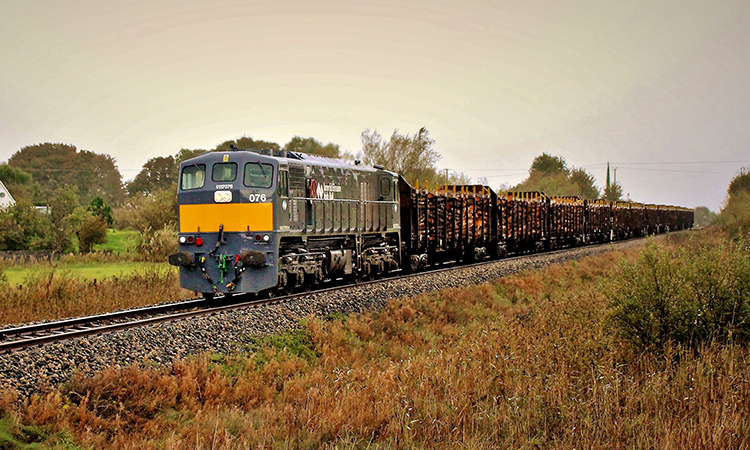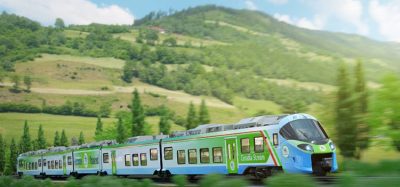Irish Rail to trial Europe’s first retrofitted hydrogen freight locomotive
Posted: 15 September 2023 | Elliot Robinson (Editorial Assistant - Global Railway Review) | No comments yet
Irish Rail are teaming with DIGAS to test a retrofitted hydrogen locomotive using a cleaner burning renewable fuel.


Credit: Irish Rail
Irish Rail and DIGAS have signed a contract to retrofit a freight diesel locomotive from diesel fuel to hydrogen as a proof of concept. The purpose of the €1.5 million project is to help decarbonise the operations of Irish Rail diesel locomotives, assist the company in meeting its goals as a Sustainable Development Goal champion, increase the competitiveness of the company and reduce carbon exhaust emissions.
Based on the agreement, Irish Rail will provide the 071 Class Diesel Locomotive for the conversion as well as make the workshop available for the installation, testing and commissioning activities. DIGAS, will manufacture deliver and install a Hydrogen Internal Combustion Engine (H2 ICE) retrofit kit to convert the diesel locomotive to a hydrogen powered locomotive. The conversion will allow the locomotive to run on renewable, emissions free fuel instead of the diesel fuel. As part of the agreement, the two companies will share technical and commercial information necessary for DIGAS to design, manufacture, install and support the commissioning of the Hydrogen conversion kit and allow Irish Rail to properly test a retrofitted locomotive.
Unlike other hydrogen projects in the rail sector, where hydrogen is used in to run locomotives via fuel cells or through specially produced hydrogen engines, this project will showcase a unique approach where hydrogen will be used in the locomotive’s current internal combustion engine.
This innovative technology requires minimal change to be done to the locomotive If successful, the project will showcase a more practical and cost-effective way to decarbonise and run the existing diesel locomotive fleet with hydrogen powered engines.
The project is currently in the design process and scheduled for two testing phases across 2024 and 2025. Phase 1 will be focused on static testing of the locomotion to check power and emissions output. Phase 2 will follow in 2025 and focus on service trials of the locomotion out on the rails. All designs and testing standards are subject to approval from the Commission for Railway Regulation (CRR).
Related news you will enjoy:
Irish Rail award Alstom contract for new train-charging infrastructure
“Irish Rail has 18 071 class diesel locomotives in railway operations, 12 of which are used to support freight operations. If the conversion tests are successful, these locomotives can be converted to greener and more efficient alternatives” Jim Meade, Chief Executive of Irish Rail, said. “Irish Rail is a designated champion of the state’s commitment to the United Nation Sustainable Development Goals. We are committed to taking a leading role in supporting the Irish Government ambitions to decarbonise transportation sector by 2040.”
“This project is proof to that commitment not only in words, but also in actions, therefore, in spite of the aggressive timeline in front of us, together we feel confident in our joint ability to make this historic step towards sustainable mobility in a timely manner” Petro Dumenko, CEO & Co-founder of DIGAS, said. “We see the same challenge over and over again with all railway operators – the need to decarbonise their operations but having an extremely long lifecycle of their assets which still runs on diesel fuel. This project will showcase a cost-effective and practical way for operators like Irish Railto decarbonise their existing fleet of diesel locomotives”.
The project is funded by Irish Rail and DIGAS, and co-funded by EIT Urban Mobility, a body of the European Institute of Innovation and Technology and Mechanical Engineering Competence Centre, a Latvian body receiving the funding from the European Recovery and Resilience Facility. The work under the contract has commenced on both sides with an objective to test a retrofitted hydrogen locomotive in 2024. As part of the agreement, Irish Rail will bring the partners into the project who will provide a hydrogen refuelling for the retrofitted locomotive.
Related topics
Rolling Stock Orders/Developments, Sustainability/Decarbonisation







